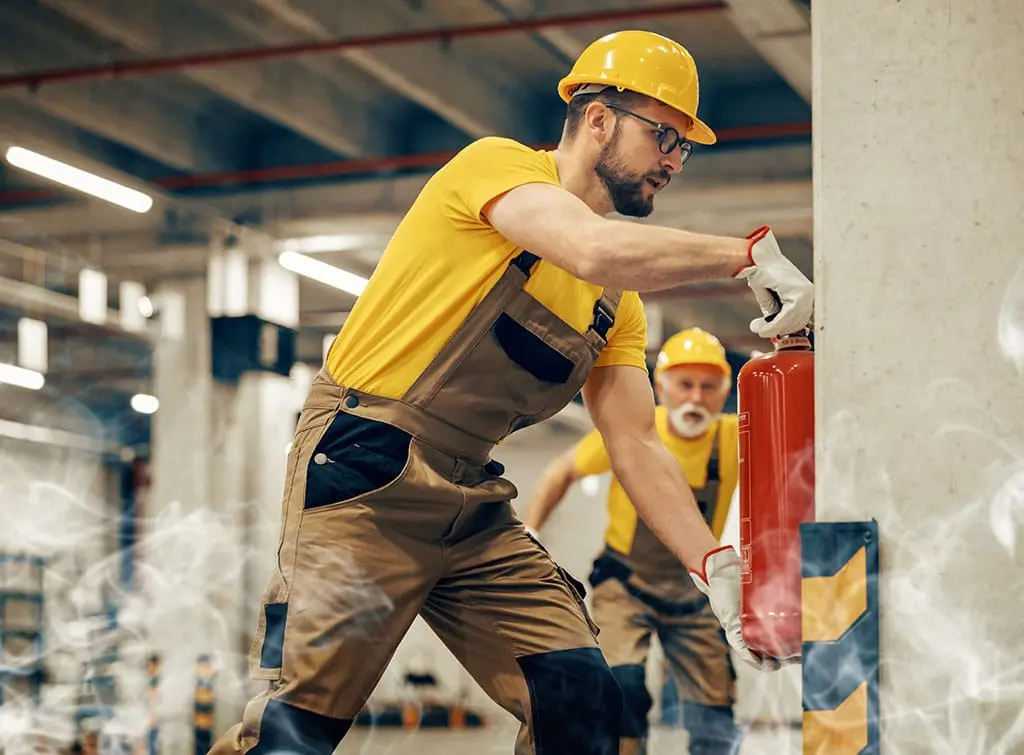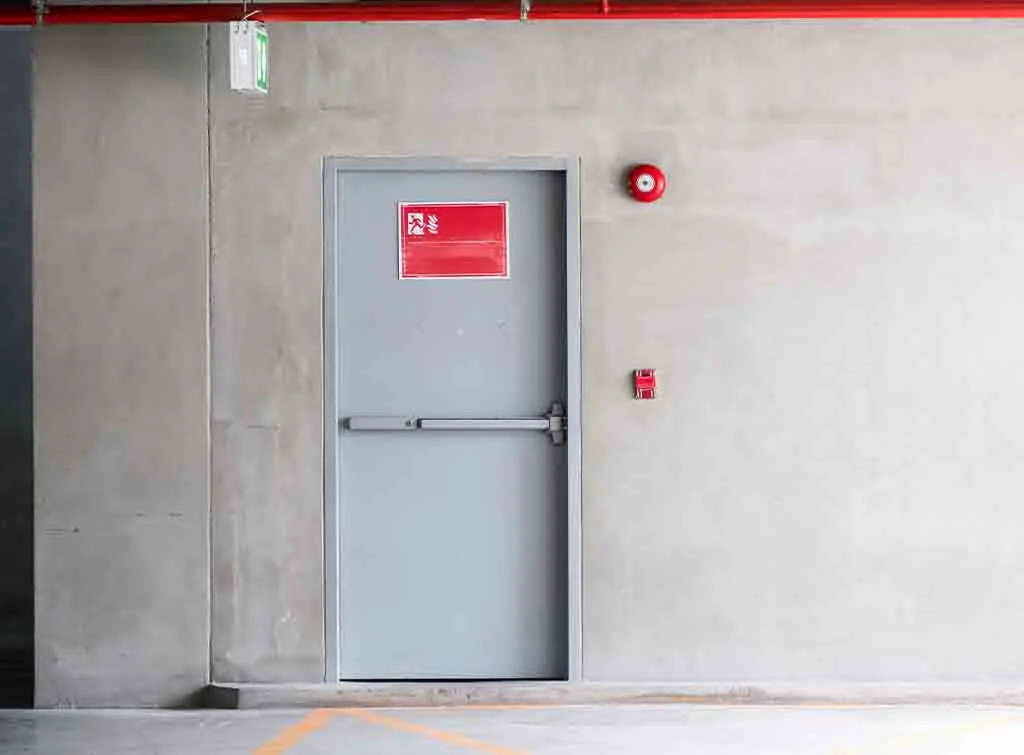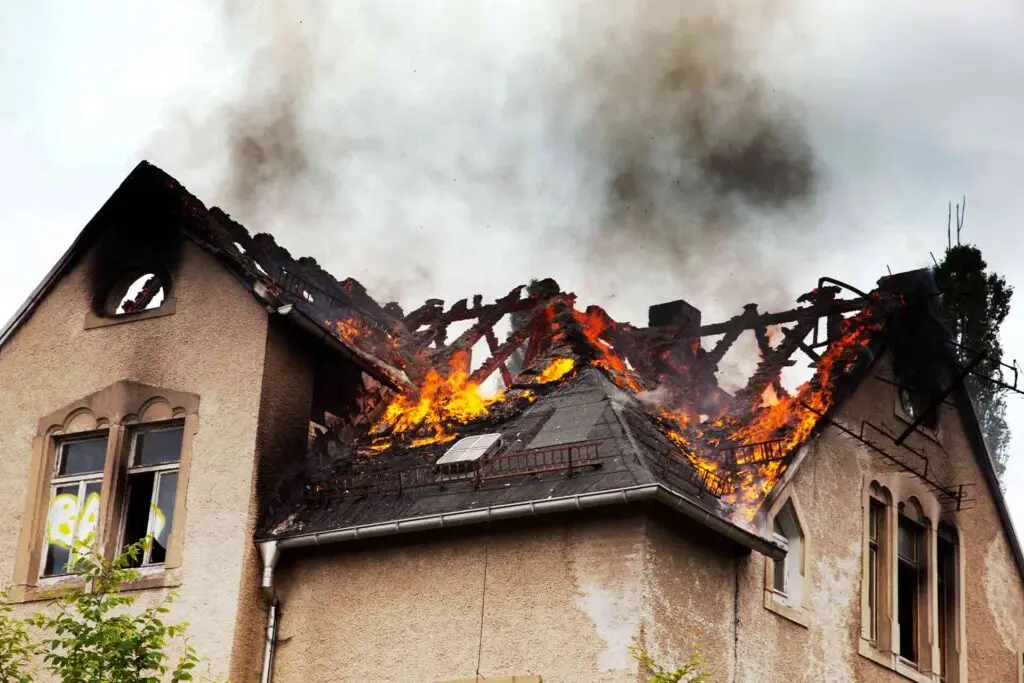Blog>Trade>Business Management>What is the Fire Safety Order? A guide to fire safety regulations for small business
Last updated: 3 January 2025
What is the Fire Safety Order? A guide to fire safety regulations for small business
Making sure you follow fire safety regulations for your premises is crucial for every trade business. This guide on Fire Safety Order regulations can help you comply.

If your trade business uses premises then the Fire Safety Order applies to you. Fire safety regulations for buildings include offices, warehouses, workshops and showrooms.
What's more, if your trade business involves undertaking fire prevention measures for your customers, then you also have responsibilities under the Fire Safety Order. Your work must be up to the right standard so your customers comply with the regulations.
What are the fire safety regulations?
You could be out of business – or far worse – if there's a fire on your premises. Risks increase depending on the work you do and the materials you use.
That’s why strict regulations make sure small businesses follow the legal requirements on fire safety. You face fines if you don’t comply.
Having regulations reduces fire risks. The Regulatory Reform (Fire Safety) Order 2005 applies in England and Wales. It Scotland, it is the Fire Safety (Scotland) Regulations 2006.
New fire safety regulations came into force on 1 October 2023 to improve fire safety. These fire safety bill amendments aim to:
Improve the sharing of fire safety information about a building
Make it easier for enforcement authorities to act if you don’t comply with fire safety regulations

What is covered by the fire safety regulations?
The Fire Safety Order covers all workplaces. It places legal duties on whoever is in control of the premises.
As the ‘responsible person’ in control of a building you must undertake a fire risk assessment. That includes employers, managers, occupiers and owners of premises.
Under the Fire Safety Order, the responsible person takes all necessary fire precaution steps to protect people and property. Additionally, make sure you maintain fire protection measures.
Make sure all your fire safety measures are fully compliant. These can range from fire extinguishers to emergency lighting. Check them regularly.
Fire is a constant threat. In the 12 months to June 2023, Fire and Rescue Services in England attended over 173,000 fires – 12% more than in the previous year. The fire safety bill update is just the latest way to reduce this threat.
Practical help for small business
We're helping tradespeople protect their business
What are the main workplace fire hazards?
Fires can start in lots of ways. A good way to make sure your trade premises is meeting regulations is to know what hazard to look out for. They include:
Faulty electrical equipment – make sure you inspect and test it regularly
Smoking – prohibited by law in workplaces
Cooking and cleaning – make sure you follow safe procedures at all times
Heating – conduct regular (usually annual) maintenance of boilers and heaters
Arson – don’t make it easy by leaving flammable materials around and ensure you have good security on your premises
Dangerous substances – follow Health and Safety Executive guidelines on using dangerous substances, especially flammable liquids

What is the best fire protection?
Put in place Fire Safety Order measures that are suitable for your premises and type of business. The Home Office has a useful guide on fire safety regulations for small premises so they are safer from fire.
Here are some handy ways to meet the regulations:
Fit fire alarms and smoke detectors
Have the right type, location and number of exits in your building that lead to a safe place
Make sure people don’t have to move far inside a building to reach the fire exit
Protect escape routes so they are useable if there is a fire, especially keeping them clear from obstructions
Install clear signage for doors and escape routes
Install emergency lighting so people can find the escape route - especially if there is smoke in the building
Fit fire doors
Think about people who may need assistance to escape
Install enough fire extinguishers and maintain them
Carry out regular fire drills
Train staff to know what to do if there’s a fire
Remember that many of these steps should be included in your fire risk assessment. As should knowledge of fire door safety regulations. That way, you can be sure to meet the requirements of the Fire Safety Order.
Although you may think buying fire safety equipment is expensive, it is a business cost. You can probably treat purchases as capital expenditure to reduce your taxable profits. If you run a limited company, use depreciation on capital expenditure to reduce your taxable profits.
Practical help for small business
We're helping tradespeople protect their business
Carrying out a fire risk assessment
Now, let's look at fire risk assessments to meet the regulations. Don't worry, they need not be too expensive. To start with, the Regulatory Reform FSO (Fire Safety Order) legislation says that a fire risk assessment must be 'suitable and sufficient'.
Your fire risk assessment should identify the risks to people on your premises. It should show you the measures you can take to protect people from fire.
If you are the business or premises owner, or the main occupier, then you are probably the ‘responsible person’. The Home Office guide offers useful fire safety tips and a checklist for a fire risk assessment.

What to include in your fire risk assessment
To comply with the Fire Safety Order, your fire risk assessment checklist should include:
Name of the person in control of the premises
Name of the person who carries out the assessment
What the premises are used for
How many floors and construction materials
How many people work in the premises
Details of electrical installations and equipment and how frequently they are checked
Details of heating systems and how they are maintained and checked
Details about any cooking that takes place on the premises
Details about any dangerous or hazardous materials kept on the premises
Details about how the premises are cleaned to reduce fire risks
Measures in place to prevent people smoking
Measures used to protect against arson
Fines and penalties for failing to do a fire risk assessment
You'll face fines for failing to carry out a fire risk assessment. Your local fire and rescue authority can visit your business premises to check that you:
Undertake a fire risk assessment
Have appropriate fire prevention measures
Ask your local authority fire safety offices about the rules and for suggestions on what preventative steps you can take. That can help ensure you comply with the fire regulations.
The government can impose minor penalties of up to £5,000 if you don't comply. Major penalties can be unlimited fines and up to two years in prison.
If your fire and rescue authority visits, they could ask you to:
Make alterations to your premises if there is a high fire risk
Make changes if potential fire risks are not being properly managed
Stop using the premises if the fire risk is so great that access has to be prevented

Key takeaways
If you own or manage premises as part of your trade you need to comply with the Regulatory Reform (Fire Safety) Order 2005
You should understand what fire hazards facing your premises to make sure you comply with the Fire Safety Order
You’ll need to carry out a fire risk assessment and review it regularly to you always meet fire regulations
Your fire risk assessment will help you know what fire protection measures you need
You can be fined if the fire and rescue authority thinks your fire prevention measures are not adequate to meet the Fire Safety Order
Ready to take your business to the next level?
We can help you find the work to get there

